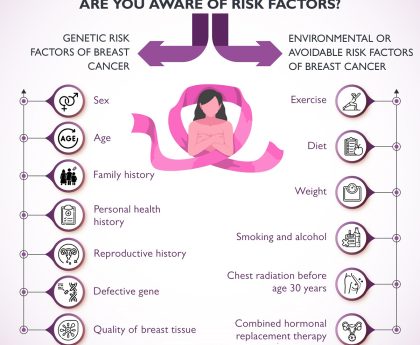The North America breast implants market is a dynamic and rapidly evolving sector within the broader medical and cosmetic industries. Breast implants are medical devices used in reconstructive and cosmetic surgeries to enhance the size, shape, and overall appearance of breasts. They are primarily made from silicone or saline and come in various shapes and sizes to meet the diverse needs of patients.
The market size for breast implants in North America was valued at USD 0.8 billion in 2023. This market is projected to grow at a compound annual growth rate (CAGR) of 5.13% from 2024 to 2032, reaching an estimated value of USD 1.2 billion by the end of the forecast period. This growth is driven by several factors, including the increasing demand for reconstructive surgeries, technological advancements in implant materials and designs, and growing societal acceptance of cosmetic procedures.
Market Drivers
Increasing Demand for Reconstructive Surgery
One of the primary drivers of the breast implants market in North America is the rising demand for reconstructive surgeries, particularly among breast cancer survivors. Breast cancer is a significant health concern in the region, and many women opt for breast reconstruction following mastectomy to restore their physical appearance and enhance their quality of life.
Reconstructive surgery using breast implants provides emotional and psychological benefits for survivors, helping them regain confidence and a sense of normalcy. The growing awareness of these benefits, coupled with advancements in surgical techniques, has led to an increase in the number of reconstructive procedures performed each year.
Technological Advancements
Technological innovation plays a crucial role in the growth of the breast implants market. Over the years, significant advancements have been made in the materials and designs of breast implants, improving their safety, efficacy, and overall patient satisfaction.
Modern breast implants are designed to mimic the natural look and feel of breast tissue more closely. Silicone implants, in particular, have seen substantial improvements, with the development of cohesive gel formulations that reduce the risk of complications such as leakage and rupture. Additionally, advancements in 3D imaging and printing technologies have enabled the creation of custom implants tailored to individual patients’ anatomical characteristics, enhancing surgical outcomes.
Growing Acceptance and Awareness
Societal attitudes towards cosmetic surgery have evolved significantly, leading to greater acceptance of procedures such as breast augmentation. This shift in perception has been driven by various factors, including increased media coverage, endorsements by celebrities, and the proliferation of information through social media platforms.
As a result, more women are considering breast implants not only for reconstructive purposes but also for cosmetic enhancement. The growing awareness and accessibility of breast implant procedures have contributed to the market’s expansion, with an increasing number of patients seeking to improve their physical appearance and boost their self-esteem.
Market Segmentation
By Product Type
The breast implants market in North America can be segmented based on product type into silicone implants and saline implants.
Silicone Implants: These implants are filled with a silicone gel that closely resembles the natural feel of breast tissue. Silicone implants are preferred by many patients and surgeons due to their realistic appearance and texture. They have a lower risk of rippling and are less likely to cause wrinkling compared to saline implants.
Saline Implants: Saline implants are filled with a sterile saltwater solution. They are inserted empty and then filled once they are in place, allowing for smaller incisions during surgery. While they are generally less expensive than silicone implants, they may not feel as natural and are more prone to issues such as wrinkling and deflation.
By Shape
Breast implants are also categorized by their shape, including round implants and anatomical (teardrop) implants.
Round Implants: Round implants are the most common type used in breast augmentation. They provide a fuller appearance, particularly in the upper part of the breast. Because they are symmetrical, there is no concern about rotation affecting the breast’s appearance.
Anatomical Implants: Also known as teardrop implants, these are designed to mimic the natural slope of the breast. They offer a more natural look, especially in patients with less natural breast tissue. However, they require precise placement to avoid rotation, which can distort the breast’s shape.
By End-User
The market can be further segmented by end-users, including hospitals, specialty clinics, and ambulatory surgical centers.
Hospitals: Hospitals remain a primary setting for breast implant surgeries, especially for reconstructive procedures following mastectomy. They offer comprehensive care and access to advanced medical technologies.
Specialty Clinics: These clinics specialize in cosmetic and plastic surgery, providing a more personalized and focused approach to breast augmentation and reconstruction. They are often preferred by patients seeking cosmetic enhancements.
Ambulatory Surgical Centers: These centers offer outpatient surgical services, including breast implant procedures. They provide a convenient and cost-effective alternative to hospitals, with shorter recovery times and reduced overall costs.
Get a Free Sample Report with Table of Contents – https://www.expertmarketresearch.com/reports/north-america-breast-implants-market/requestsample
Regional Analysis
United States
The United States holds the dominant share of the North America breast implants market. This is attributed to the high prevalence of breast cancer, the availability of advanced medical facilities, and a strong presence of key market players. The country’s robust healthcare infrastructure and high disposable income levels also contribute to the market’s growth.
In the U.S., major cities and regions such as New York, California, Texas, and Florida are significant contributors to market growth. These areas have a high concentration of healthcare providers, plastic surgeons, and cosmetic clinics, making breast implant procedures more accessible to the population.
Canada
Canada also represents a significant market for breast implants, with a growing number of women opting for both reconstructive and cosmetic procedures. The country’s healthcare system provides coverage for reconstructive surgeries, making them more accessible to breast cancer survivors.
Key trends in Canada include the increasing adoption of silicone implants and the rising popularity of minimally invasive surgical techniques. Major cities such as Toronto, Vancouver, and Montreal are notable hubs for plastic surgery, contributing to the market’s expansion.
Competitive Landscape
Key Players
The North America breast implants market is characterized by the presence of several key players who drive innovation and competition. Some of the leading companies in the market include:
Establishment Labs SA: A prominent player known for its innovative and high-quality breast implants. The company’s Motiva Implants® are renowned for their safety and natural look.
GC Aesthetics: A global leader in breast implants, offering a wide range of products that cater to diverse patient needs. Their focus on safety and quality has earned them a strong reputation in the market.
Groupe Sebbin SAS: Known for its premium breast implants and commitment to innovation. The company’s implants are designed to provide natural results with a high level of patient satisfaction.
Laboratories Arion: A key player in the market, offering a variety of breast implant options. Their products are recognized for their quality and safety.
Market Share Analysis
The market share analysis of these key players reveals their competitive positioning and strategies. Establishment Labs SA, with its focus on innovation and patient safety, has gained a significant market share. GC Aesthetics and Groupe Sebbin SAS also hold substantial shares, driven by their extensive product portfolios and strong market presence.
Recent developments in the market include product launches, strategic partnerships, and mergers and acquisitions. These activities are aimed at expanding market reach, enhancing product offerings, and strengthening the competitive positioning of key players.
Market Challenges
Regulatory Hurdles
The breast implants market in North America faces several regulatory challenges. The U.S. Food and Drug Administration (FDA) plays a crucial role in regulating the approval and monitoring of breast implants. Manufacturers must adhere to stringent regulatory requirements to ensure the safety and efficacy of their products.
Changes in regulatory policies and guidelines can impact the market, causing delays in product approvals and increasing the cost of compliance. Companies need to stay updated with regulatory changes and invest in research and development to meet the evolving standards.
Health and Safety Concerns
Health and safety concerns associated with breast implants are significant challenges for the market. Complications such as capsular contracture, implant rupture, and breast implant-associated anaplastic large cell lymphoma (BIA-ALCL) have garnered media attention and influenced public perception.
Addressing these concerns requires continuous monitoring of implant performance, improving product safety through innovation, and providing accurate information to patients and healthcare providers. Companies must also invest in post-market surveillance and clinical studies to ensure the long-term safety of their products.
Future Trends and Opportunities
Innovations and Technological Advancements
The future of the breast implants market in North America is likely to be shaped by continued innovations and technological advancements. Research and development efforts are focused on creating next-generation implants that offer improved safety, durability, and aesthetic outcomes.
Emerging technologies such as 3D printing and bioengineered implants hold promise for the market. These technologies enable the customization of implants to match individual patients’ anatomical features, resulting in more natural and satisfactory results.
Expanding Applications
Beyond traditional cosmetic and reconstructive uses, breast implants are finding new applications in medical and aesthetic fields. For example, breast implants are increasingly being used in gender affirmation surgeries for transgender individuals, broadening the patient base.
Personalized and custom implants are also gaining traction, catering to the unique needs and preferences of patients. This trend is expected to drive demand and open new growth opportunities for the market.





